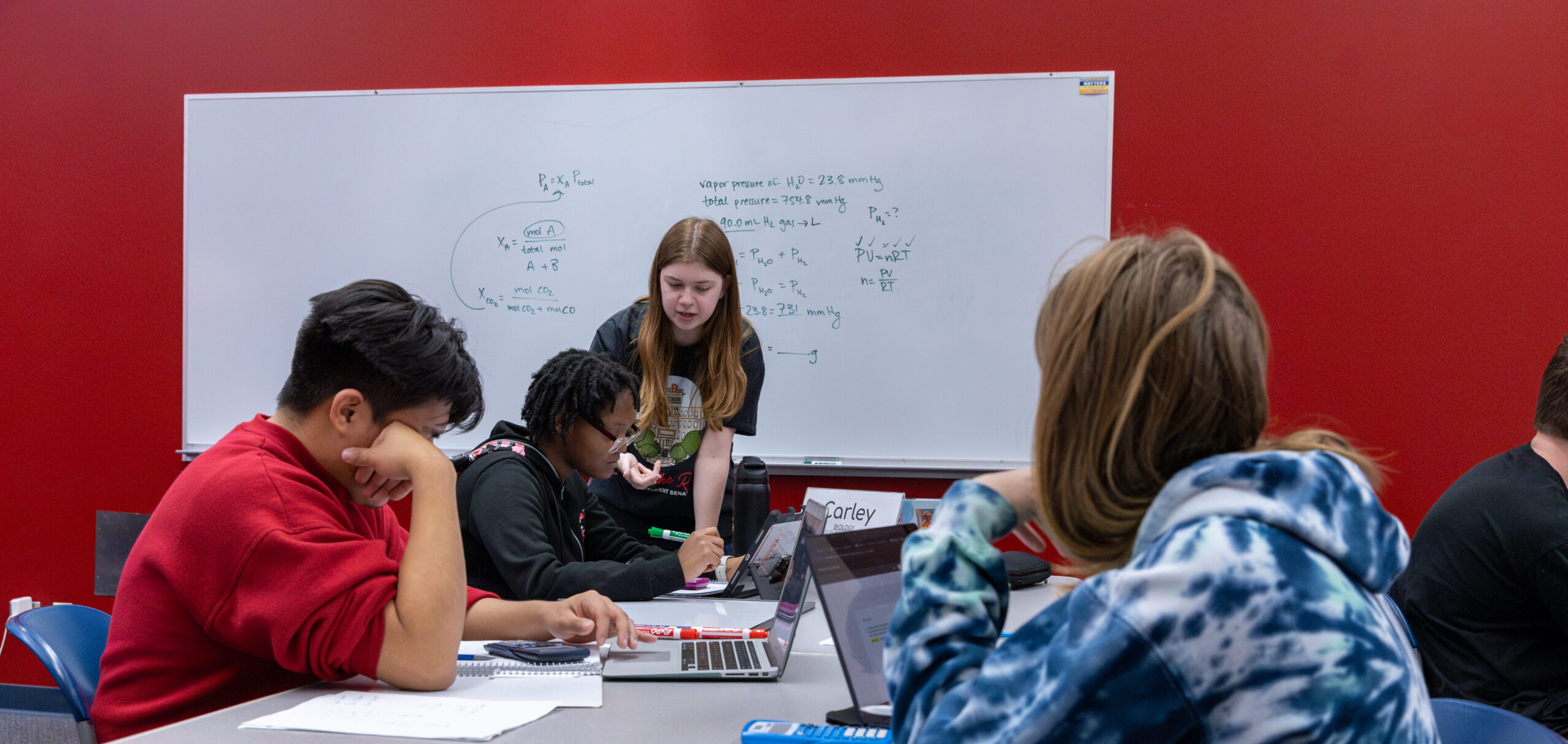
You open your textbooks the night before an exam and ask yourself: how long should you study for a test? For college students, guessing how many hours to spend on reading, reviewing, and practicing often leads to cramming, poor focus, or burnout. This post lays out clear study time guidelines, study schedules, spaced-repetition tips, and practice-test routines so you can plan focused study sessions, boost memory retention, fix poor study habits, and walk into any test confident and ready to earn top grades without feeling overwhelmed.
HyperWrite's AI writing assistant helps turn those guidelines into a personalized study plan, create concise summaries, and generate practice quizzes so you study smarter, keep your time management on track, and lower stress.
Summary
- Short, focused study cycles are most effective, with 30 to 50-minute sessions paired with a 10-minute break, aligning with standard attention spans and supporting deep retrieval practice.
- Spaced repetition dramatically reduces forgetting: 85% of students report improved retention when using expanding review intervals rather than massed practice.
- Active recall drives measurable gains: students who use retrieval-based methods scored about 20% higher on average on exams than those who use passive study techniques.
- Pick a daily target that matches your constraints: 5 to 15 minutes is a pragmatic baseline for chaotic schedules, 1 to 2 hours is a sustainable sweet spot for many, 3 to 4 hours suits heavier course loads, 5 to 8 hours fits full-day study, and 9 to 10 hours should be reserved only for short, time-boxed sprints.
- Session cadence matters, for example, 25-minute work blocks with 5-minute breaks have been linked to roughly a 20% increase in retention, while 50-minute blocks with 10-minute breaks can improve sustained focus by about 15%.
- This is where HyperWrite's AI writing assistant fits in, converting notes into tailored study plans, concise summaries, and practice quizzes so students spend more time on high-value retrieval.
How Long Should You Study for a Test?

There is no single magic number:
- How long you should study depends on the subject
- The exam type
- How well you already know the material
Focus on consistent, high-intensity practice blocks tailored to those variables, not on accumulating hours for the sake of hours.
What Changes When A Subject Is Harder?
Pattern recognition: More challenging subjects demand more deliberate practice and more recovery time between sessions. For problem-heavy material like calculus or organic chemistry, you will spend more time doing worked examples and error analysis, and your peak productive window will shrink.
For theory-heavy or memorization tasks, you can sustain longer retrieval sessions before performance drops. Think of difficulty as a dial: turn it up, and you need to lower session density and increase spacing.
How Does The Exam Format Change Your Approach?
Constraint-based: If the test is primarily multiple-choice, prioritize spaced retrieval and quick, frequent practice questions to build recognition under time pressure. When the exam is essay-based, shift toward longer synthesis sessions where you plan and write sample answers, then rest to consolidate.
The key tradeoff is intensity versus endurance: multiple-choice favors many short, intense rehearsals; essays require fewer but deeper rehearsals where you practice organizing and expressing ideas.
How Does Your Familiarity With The Material Affect The Number Of Hours?
Specific experience: Students who already know the basics tend to get disproportionate returns from targeted practice, reducing overall hours. If you are unfamiliar with the foundations, you must allocate more time early on for encoding, which means slower, scaffolded sessions focused on understanding before retrieval.
The applicable rule is this: spend more hours early if you are building foundations, then compress study later into high-quality retrieval once foundations are stable.
How Should You Structure Individual Sessions and Breaks?
Problem-first: Long, undirected study sessions burn time with little gain. Short, focused cycles work better. According to Mindgrasp Blog, "Study sessions should be 30 to 50 minutes long," published in 2025, which aligns with standard attention spans and supports deep retrieval practice.
Pair each cycle with recovery: Mindgrasp Blog, "Take a 10-minute break after each study session," published in 2025, recommends brief rests to reset working memory and reduce fatigue.
Which Personal Limits Should You Respect?
Confident stance: Your life constraints set a hard ceiling on sustainable study time. If you have a full-time job and family, your daily study window will be smaller than that of a student on leave, and that is fine.
The trick is to optimize the hours you have for impact, not to guilt yourself into chasing someone else’s regimen. This is why grading your session quality matters more than tallying hours.
Why Starting Earlier Beats Cramming
Pattern recognition: Spreading study over days or weeks lets you exploit spacing and consolidation, so each hour becomes more effective. Rushing into marathon sessions the night before yields short-term recall at best and a higher risk of burnout.
This is the failure mode I see often: students pile on hours with low-intensity tactics, then wonder why returns flatten.
A Practical Analogy To Guide Decisions
Specific experience: Treat study like sharpening a blade, using short, deliberate strokes rather than sawing at the metal until it heats up. Those short strokes are focused retrieval and targeted problem practice; the cooling periods are your breaks and sleep.
The combination yields a sharper result with far less wasted effort.
Where Tools Fit In The Tradeoff Between Time And Quality
Most students plan to study by piling hours because that method is familiar and straightforward. That works up to a point, but as topics multiply and time tightens, the familiar approach fragments your focus and wastes time on low-value tasks.
Platforms like AI writing assistants can compress planning and practice creation, summarizing research into clear schedules, generating targeted practice questions, and producing concise explanations, which helps students convert weak study hours into strong learning outcomes.
This keeps circling back to a straightforward decision: how much time you can reliably protect, and how you spend it. The following section will break the ideal study duration down into practical ranges and explain why those ranges matter.
Related Reading
- When Is the Best Time to Study for a Test
- What Is the Hardest Thing to Study in College
- Can AI Solve Math Problems
- How to Study in Med School
- Types of Study Methods
- How to Study for a Math Test
- Study Tips for High School
- Study Tips for Middle School
- Study Strategies for High School Students
Breaking Down the Ideal Study Duration

Pick a daily study target you can reliably stick to and that matches what you need to learn; for most people, that will fall somewhere between tiny daily sprints and intense, short-lived exam pushes.
Who Should Aim For 5 To 15 Minutes A Day?
For students with chaotic schedules, chronic procrastination, or heavy outside commitments, five to fifteen minutes daily is a pragmatic baseline. After coaching students through 12-week revision cycles, the pattern became clear: those who felt overwhelmed by the myth that more hours automatically mean better grades were the ones who benefited most from a tiny, nonthreatening daily habit.
Use that slot for high-value microtasks, like creating and self-testing a small batch of flashcards or doing a single worked example, so you build momentum without triggering resistance.
Is 1 To 2 Hours Per Day Realistic For Most People?
Yes, one to two focused hours a day is the sustainable sweet spot for many learners:
- Juggling work
- Family
- Classes
Treat this as your weekly engine: those hours compound into meaningful progress when you prioritize retrieval practice and deliberate problem-solving, not passive re-reading.
- Hard problems
- The second hour is for synthesis or active recall
- Protect them like appointments you cannot move
When Should You Push To Three To Four Hours?
Three to four hours daily is reasonable when your course load is heavy, but you still need to keep other life roles intact. This range works if you split time into distinct modes:
- Deep practice
- Error analysis
- Spaced review
Watch the failure mode: if you fill the time with low-value tasks, you will hit diminishing returns. Stop extending hours; instead, refine what you do in each block.
Who Can Sustain Five To Eight Hours Per Day?
Five to eight hours belong to students who can dedicate most of their day to study and who use highly efficient, evidence-based methods. Longer days must be architected around alternating periods of focused work and real recovery so cognitive resources can replenish.
For many tasks, longer uninterrupted focus helps, and practicing with a rhythm improves endurance, as shown by MyStudyLife (2025): "Studying in blocks of 50 minutes with a 10-minute break can improve focus by 15%," suggesting that spacing work with substantive short rests boosts sustained attention.
Is Nine To Ten Hours Ever Sensible?
Nine to ten hours can be defended only as a short-term, clearly bounded strategy for urgent exam preparation, not as an ongoing routine. Think of it as redline mode during a two- or three-week sprint: intense, tolerable if you schedule at least one full day off per week and maintain:
- Sleep
- Nutrition
- Brief social breaks
If your accuracy, recall quality, or mood slips before you hit nine hours, that is your signal to stop; effectiveness, not proud totals, decides progress.
How Should You Decide Which Range Fits You?
If you have little prior exposure to the material, start higher to build foundations; if you already own the basics, compress time and increase retrieval density. If you juggle work or parenting, choose micro or 1–2 hour targets and make them nonnegotiable.
This is a constraint-based decision:
- As external obligations rise
- Prioritize higher-intensity methods
- Tighter spacing rather than more extended hours
What Does Pacing Look Like Inside A Day?
Structure matters more than raw hours. For many students, alternating compact practice cycles with short, restorative breaks yields more learning per hour. According to MyStudyLife (2025), "Students who study for 25 minutes followed by a 5-minute break show a 20% increase in retention,” that cadence boosts retention for tasks that rely on repeated recall, which makes it worthwhile when you are building memory or fluency.
Most students plan by estimating hours and hoping they stick, and that familiar approach is easy and comfortable. The hidden cost is wasted time and mental friction as tasks and resources scale, with planning fragments and practice questions scattered across apps and notebooks.
The "Deep Work" Advantage: Shifting Student Time from Prep to Practice
Solutions like HyperWrite compress the planning and practice-generation workload, they summarize research into a tailored plan, generate targeted practice questions, and produce succinct review notes, letting students cut schedule design and material prep from hours to minutes while keeping focused practice high-value.
The "Test-and-Tweak" Approach: Using Data to Personalize Your Pacing and Cadence
Think of choosing your study hours like tuning a bicycle saddle: minor adjustments change comfort and speed, but the wrong height makes long rides miserable. Pick a daily target you can sustain for weeks, test it for two cycles, then tweak by shifting session length, break cadence, or task mix until recall and motivation both climb.
That simple choice feels final, until the next decision reveals the one technique everyone misses.
Related Reading
- How to Study the Night Before an Exam
- Different Study Techniques
- How to Study for a Final Exam
- How Many Hours Do College Students Study per Week
- How to Create a Study Schedule
- Study Habits for High School
- Good Study Habits for College
- How to Study for Finals in High School
- Scientifically Proven Study Methods
Study Techniques for Optimal Learning

You should treat study time as an efficiency problem, not a clock to fill:
- Prioritize high-quality retrieval
- Spaced reviews
- Mixed practice
Each hour yields measurable retention and exam performance. Focused sessions that force you to recall, explain, and correct errors beat passive hours every time.
What Exactly Should Active Recall Look Like In Practice?
Start each session by forcing retrieval before you read. Close your notes and write everything you can remember, then grade that output against the source. Turn missed points into targeted questions you will test again. Make your own short quizzes and answer them under time pressure, then immediately correct errors and update an error log.
This process trains the neural pathways that produce fluent recall, which is why Learn Do Grow (2025) states, "Students using active recall methods scored 20% higher on average in exams.”
How Should You Schedule Spaced Repetition So It Actually Sticks?
Plan reviews on expanding intervals: same day, two to three days later, one week later, then longer. Treat every flashcard or question like a tiny investment you expect to compound; if it fails on review, move it forward in the schedule rather than abandoning it. Use simple systems, such as Leitner boxes or a digital queue, that automatically resurface weak items.
This reduces wasted rehearsal and keeps fragile knowledge from slipping away, which helps explain why Learn Do Grow (2025) reports that "85% of students reported improved retention when using spaced repetition techniques.”
When Should You Interleave Topics Rather Than Block Them?
Use interleaving when the skill depends on choosing the right approach, not just executing a single procedure. For example, alternate problem types that require different solution strategies, instead of drilling a kind until you feel comfortable.
The pattern is predictable: blocked practice builds fluency in a narrow context and collapses when the context changes; interleaving builds discrimination and transfer. If you must cram, prioritize interleaving for problem-solving subjects because it reduces the brittle learning that fails under test pressure.
How Do You Mix Reading, Practice Problems, And Review Within A Session?
Follow a session blueprint that forces output and reflection. For a two-hour block, try this: 10 minutes of cold recall, 60 minutes of targeted problems with error analysis after each set, 20 minutes of retrieval practice on related flashcards, and 30 minutes synthesizing a one-paragraph summary plus three new practice questions you will test later.
The act of converting mistakes into questions creates high-yield material for spaced repetition and turns passive time into deliberate practice.
What Standard Failure Mode Should You Watch For?
The usual trap is mistaking activity for progress, filling time with re-reading or highlighting, and calling it study. It feels productive, but it does not expose gaps. It is exhausting to keep doing this, because anxiety rises while the work remains shallow.
The more constrained your schedule, the more ruthless you must be about replacing passive tasks with active ones that generate feedback.
The Hidden Cost of Manual Planning: The Friction Between Prep Time and Retrieval Density
Most students use familiar, manual planning because it requires no new tools, but that habit hides a real cost. As study loads grow, planning and creating quality practice questions consume hours that do not directly build recall. That friction scatters resources and lowers retrieval density during study sessions.
Platforms like HyperWrite shorten that loop by generating concise summaries, tailored practice questions, and compact schedules from your notes, cutting prep time drastically while keeping the session focused on high-impact retrieval.
How Do You Adapt This To Your Personal Limits And Goals?
Treat the first two weeks as an experiment: pick a session blueprint, measure what you recall on day 3 and day 7, then change one variable if recall lags. If you already understand foundations, shift toward dense retrieval and fewer encoding sessions.
If the foundations are weak, add short explanation phases: teach a concept aloud for 5 minutes, then convert any gaps into practice items. Keep a one-line metric each day, for example, the percentage of flashcards passed, and use it to guide spacing adjustments.
The "Tempered Learning" Principle: Balancing Intense Focus with Deliberate Cognitive Rest
Think of practical study like tempering metal: short, intense strikes followed by deliberate cooling produce strength, while constant heating makes the material brittle and weak. That solution works until you hit the one obstacle nobody talks about.
Try our AI Writing Assistant to Write Natural-sounding Content

If you want to study smarter and protect your limited time, try HyperWrite to convert scattered notes into targeted practice, clear outlines, and essay drafts that still sound like you.
When I coached students across several semesters, the pattern was clear: tools that demand constant babysitting erode momentum, which is why learners are turning to platforms with over 1 million users (Rytr, 2023) and to tools that generate content 10x faster to reclaim hours without losing accuracy or voice.
Related Reading
- Best AI for Exams
- Best Light Color for Studying
- AI Activities for High School Students
- Best AI Websites for Students
- Best Way to Study for a Test
- Best Study Tools for College Students
- Best AI to Solve Math Problems
- Best Study Apps for College Students
- Best Study Methods

Powerful writing in seconds
Improve your existing writing or create high-quality content in seconds. From catchy headlines to persuasive emails, our tools are tailored to your unique needs.

